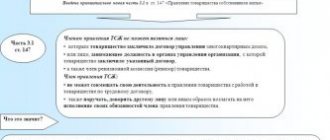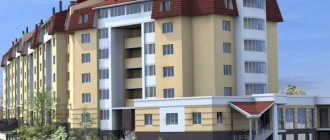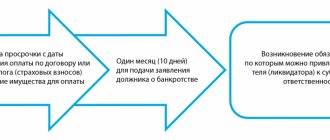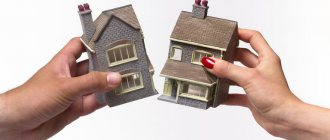Draw up documents in preparation for the members' meeting
As we told earlier, the initiators of the general meeting of members of a partnership or cooperative, at the stage of preparation for the PSC, prepare a notice of the upcoming meeting and a voting ballot.
This stage is not limited in time, so there is no need to rush when drawing up these documents. It is important that they contain all the necessary details and information about the planned PSD of the partnership/cooperative. You just need to remember that the completed notification is sent to the members of the partnership no later than 10 days before the date of the general meeting (Part 1 of Article 146 of the Housing Code of the Russian Federation).
After the meeting, the counting commission must count the votes according to the completed ballots and draw up minutes of the meeting and appendices to it. The general requirements for these documents are enshrined in the order of the Ministry of Construction of the Russian Federation dated January 28, 2019 No. 44/pr.
Let's consider the features of drawing up each of the mentioned documents - notice, voting ballot, protocol - using the example of preparation for a general meeting of members of a home/real estate owner's association. Housing cooperatives, as a rule, prepare documents for the meeting in a similar way to HOAs.
How to prepare and successfully conduct a general meeting of members of an HOA or residential complex
61199
What does it take to create an HOA?
To organize an HOA in your home, you need to convene a general meeting of homeowners. At the meeting, a decision is made on choosing a method of managing the house in the form of an HOA. After you hold a meeting, count the votes and draw up a protocol, you must notify the state housing supervision authorities (GZHI of your region) about the creation of an HOA within 5 days.
To register an HOA with the Federal Tax Service (federal tax service), you need to collect a package of documents:
- Application for state registration of HOA with a signature certified by a notary;
- Charter of the HOA, which was approved at the OSS;
- OSS protocol. You can submit the original or a notarized copy of the protocol;
- Receipt for payment of state duty.
After registering with the tax office, you receive a OGRN (certificate of state registration of a legal entity), an INN (individual taxpayer number) and an extract from the register of legal entities (USRLE). With these documents you need to go to the printing center and make a seal for the documents.
A new organization needs a bank account. To open an account, provide the documents that you received from the tax office - OGRN, INN, extract from the Unified State Register of Legal Entities - as well as a copy of the OSS protocol and a copy of the HOA Charter. There is no need to notify the tax office about opening an account; the bank will do this.
After registering the HOA and opening an account, it is necessary to conclude agreements with resource supply organizations (RSO): with the electricity supplier, water utility, gas supplier, heating networks. Representatives of resource supply organizations will tell you what documents you need to provide to conclude an agreement.
Correctly formulate agenda items
A notice of a general meeting of owners must contain the following information:
- The name of the HOA whose members are invited to the general meeting of members, and information about the initiator of the meeting.
- The form in which the PSC will be conducted: full-time, part-time, part-time, part-time.
- Date, time and place of the meeting in person.
- A list of documents that meeting participants must have with them to confirm their right to vote at the PSC.
- Ways to contact meeting initiators if participants want to review meeting materials or ask additional questions about PSD.
If the meeting is held in absentia or in person, then the period for holding the absentee part of the meeting, the deadline for submitting ballots, and the place where they must be submitted are additionally indicated.
The notice of the partnership's PSC must include an agenda. It should contain questions about the selection of the chairman and secretary of the PSD. These persons can also be entrusted with the functions of the counting commission for counting votes and summing up the results of the meeting. It is better that these are three different questions in order to avoid a situation where HOA members vote against one candidate:
1. Elect Ivan Ivanovich Ivanov as chairman of the general meeting of members of the HOA “Name”.
2. Elect Petrov Petrov as secretary of the general meeting of members of the HOA “Name”.
3. The responsibility for counting votes is assigned to the chairman and secretary of the general meeting of members of the “Name” HOA.
Next, the agenda lists in order the issues put up for voting in accordance with the competence of the PSC of the owners' partnership. They must be formulated in such a way that they can be answered unambiguously by “for”, “against” or “abstain”. It is best to start a question with a verb: “Approve/Elect/Direct”, etc.
It is imperative to include on the agenda the issue of the storage location of the PSC documents and the method of communicating the meeting’s decisions to all members of the HOA/LCD, if this has not been previously determined.
On the peculiarities of holding general meetings of members of HOAs and residential complexes
195879
Multifunctional center - Neya
Where to go
| Name of institution | Regional state government institution "Multifunctional center for the provision of state and municipal services of the Neysk municipal district of the Kostroma region" |
| Area | Neysky |
| When it works | Monday-Friday: from 09:00 to 18:00, break: from 13:00 to 14:00 |
| Site | https://mfc44.ru |
| [email protected] | |
| Address | Kostroma region, Neisky district, Neya, Lyubimova street, 3a |
| Phones | 88 |
| In what region of the Russian Federation is it located? | Kostroma region |
Extract from the Unified State Register of Real Estate for an apartment, house, plot in Ney in 2020
On the map
Enter three pieces of information into the voting ballot
The ballot paper is easy to draw up once the PSD notice has been developed and approved. These documents largely duplicate each other.
The bulletin can be divided into three blocks:
- About the upcoming general meeting of members: form, date, time and place, contacts of the initiators, information about the HOA.
This block is filled out by the initiators in accordance with the information specified in the notification of the PSD.
- About the owner and the premises in his possession in an apartment building.
The last name, first name and patronymic of the owner, apartment/room number, total area, and the owner’s share in the apartment are indicated. Information about the document certifying ownership is also entered: name, series and number, date of issue.
- Issues included in the agenda and stated in the notice of the meeting, with the answer options “for”, “against”, “abstained”.
Each page of the ballot must have a field for the voter's signature and transcript. The pages of the newsletter are numbered to prevent loss or confusion.
Draw up a protocol in accordance with the requirements of Order No. 937/pr
The form of the minutes of the general meeting of members of the HOA/housing complex is drawn up in accordance with the requirements for the minutes of the general meeting of owners of premises in an apartment building, which are enshrined in the order of the Ministry of Construction of the Russian Federation dated January 28, 2019 No. 44/pr.
According to Order No. 44/pr, the mandatory details of the protocol include:
- its name, date and registration number,
- date and place of the PSC,
- header and body of the protocol,
- storage location for protocols,
- list of applications,
- signatures with transcript.
The information specified in the protocol must correspond to the data that the initiators indicated in the message about the general meeting of HOA members.
The heading of the main part of the protocol should include the form of the meeting, the type of meeting (regular or extraordinary) and the address of the apartment building managed by the HOA/LCD.
How to change the composition of common property in a house managed by a housing cooperative
73131
Creation and activities of HOAs (Housing Code)
Section VI. HOUSING OWNERS ASSOCIATION
Chapter 13. CREATION AND ACTIVITY OF A HOUSING OWNERS ASSOCIATION
Article 135. Homeowners’ Association
1. A homeowners' association is a non-profit organization, an association of owners of premises in an apartment building for joint management of a complex of real estate in an apartment building, ensuring the operation of this complex, ownership, use and, within the limits established by law, disposal of common property in an apartment building.
2. The charter of the homeowners’ association is adopted at a general meeting, which is held in the manner established by Articles 45 - 48 of this Code, by a majority vote of the total number of votes of the owners of premises in an apartment building.
3. The number of members of the homeowners’ association who created the partnership must exceed fifty percent of the votes of the total number of votes of the owners of premises in an apartment building.
4. A homeowners’ association is created without limiting the period of activity, unless otherwise provided by the charter of the association.
5. A homeowners’ association is a legal entity from the moment of its state registration. The homeowners association has a seal with its name, a current and other bank account, and other details.
6. The homeowners association is liable for its obligations with all the property belonging to it. The homeowners association is not liable for the obligations of the association members. Members of a homeowners association are not liable for the obligations of the association.
Article 136. Creation and state registration of a homeowners’ association
1. Owners of premises in one apartment building can create only one homeowners’ association. The decision to create a homeowners' association is made by the owners of premises in an apartment building at their general meeting. Such a decision is considered adopted if it is voted for by the owners of premises in the corresponding apartment building, having more than fifty percent of the votes of the total number of votes of the owners of premises in such a building.
2. A homeowners’ association can be created by merging:
1) several apartment buildings, the premises of which belong to different (at least two) owners of the premises in the apartment building, with land plots located on a common land plot or several neighboring (bordering) land plots, engineering networks and other infrastructure elements ;
2) several nearby buildings, structures or structures - residential buildings intended for single-family residence, country houses with or without personal plots, garages and other objects located on a common land plot or several neighboring (bordering) land plots, utility networks technical support and other infrastructure elements.
3. State registration of a homeowners’ association is carried out in accordance with the legislation on state registration of legal entities.
Article 137. Rights of the homeowners association
1. The homeowners association has the right:
1) conclude, in accordance with the law, an agreement for the management of an apartment building, as well as agreements on the maintenance and repair of common property in an apartment building, agreements on the provision of utility services and other agreements in the interests of members of the partnership;
2) determine the estimate of income and expenses for the year, including the necessary expenses for the maintenance and repair of common property in an apartment building, the costs of major repairs and reconstruction of an apartment building, special contributions and deductions to the reserve fund, as well as expenses for others established by this chapter and the articles of association of the purpose partnership;
3) establish, on the basis of the accepted estimate of income and expenses for the year of the partnership, the amounts of payments and contributions for each owner of premises in an apartment building in accordance with his share in the right of common ownership of common property in the apartment building;
4) perform work for the owners of premises in an apartment building and provide them with services;
5) use loans provided by banks in the manner and under the conditions provided for by law;
6) transfer material and monetary resources under an agreement to persons performing work for the partnership and providing services to the partnership;
7) sell and transfer for temporary use, exchange property belonging to the partnership.
2. In cases where this does not violate the rights and legitimate interests of the owners of premises in an apartment building, the homeowners association has the right to:
1) provide for use or limited use part of the common property in an apartment building;
2) in accordance with the requirements of the law, in the prescribed manner, build on, rebuild part of the common property in an apartment building;
3) receive for use or receive or acquire land plots into common shared ownership of the owners of premises in an apartment building for housing construction, construction of utility and other buildings and their further operation;
4) carry out, in accordance with the requirements of the law, on behalf and at the expense of the owners of premises in an apartment building, the development of allocated land plots adjacent to such a house;
5) enter into transactions and perform other actions consistent with the goals and objectives of the partnership.
3. If the owners of premises in an apartment building fail to fulfill their obligations to participate in common expenses, the homeowners’ association in court has the right to demand forced reimbursement of mandatory payments and contributions.
4. A homeowners’ association may demand in court full compensation for losses caused to it as a result of the failure of the owners of premises in an apartment building to fulfill their obligations to pay mandatory payments and contributions and pay other general expenses.
Article 138. Obligations of the homeowners association
The homeowners association is obliged to:
1) ensure compliance with the requirements of this chapter, the provisions of other federal laws, other regulatory legal acts, as well as the charter of the partnership;
2) enter into agreements on the maintenance and repair of common property in an apartment building with the owners of premises in the apartment building who are not members of the partnership;
3) fulfill obligations under the contract in the manner prescribed by law;
4) ensure proper sanitary and technical condition of common property in an apartment building;
5) ensure that all owners of premises in an apartment building fulfill their responsibilities for the maintenance and repair of common property in an apartment building in accordance with their shares in the right of common ownership of this property;
6) ensure compliance with the rights and legitimate interests of the owners of premises in an apartment building when establishing the conditions and procedure for ownership, use and disposal of common property;
7) take measures necessary to prevent or terminate actions of third parties that impede or interfere with the exercise of the rights of ownership, use and, within the limits established by law, of the owners of premises with common property in an apartment building;
 represent the legitimate interests of the owners of premises in an apartment building, including in relations with third parties.
represent the legitimate interests of the owners of premises in an apartment building, including in relations with third parties.
Article 139. Creation and state registration of a homeowners’ association in apartment buildings under construction
1. In multi-apartment buildings under construction, a homeowners’ association may be created by persons who will have ownership rights to premises in such buildings.
2. The decision to create a partnership of homeowners in apartment buildings under construction is made at a general meeting of the persons specified in Part 1 of this article, which is held in the manner established by Articles 45 - 48 of this Code.
3. State registration of a partnership of homeowners in apartment buildings under construction is carried out in accordance with the legislation on state registration of legal entities.
Article 140. Reorganization of a homeowners’ association
1. The reorganization of a homeowners’ association is carried out on the basis and in the manner established by civil legislation.
2. By decision of the general meeting of owners of premises in an apartment building, a homeowners’ association may be transformed into a housing or housing-construction cooperative.
Article 141. Liquidation of a homeowners’ association
1. Liquidation of a homeowners’ association is carried out on the basis and in the manner established by civil legislation.
2. The general meeting of owners of premises in an apartment building is obliged to make a decision on the liquidation of the partnership of homeowners if the members of the partnership do not have more than fifty percent of the votes of the total number of votes of the owners of premises in the apartment building.
Article 142. Association of homeowners’ associations
Two or more homeowners' associations can create an association of homeowners' associations to jointly manage common property in apartment buildings. The management of the said association is carried out according to the rules of this chapter.
Divide information on each agenda item into five parts
In the main part of the protocol, the initial data of the PSC is first indicated: information about the initiator of the meeting, the chairman and secretary, if the issue of their election was not included in the agenda of the meeting, about the members of the partnership who voted at the meeting.
Information about the total number of votes of HOA members, the presence of a quorum at the meeting and the number of votes of meeting participants is also indicated here. The minutes must include the agenda.
The following information should be provided for each item on the agenda:
1. Wording and number of the issue according to the agenda.
2. “Listen”: who spoke on the issue, and briefly what the initiator of the meeting or another speaker said.
3. “Proposed”: the essence of the issue/proposal put to vote is stated clearly and concisely.
4. “Voted”: the results of counting the votes of the HOA members for each type of answer “for”, “against”, “abstained”, indicating the percentage of the total number of votes of the partnership members who took part in the meeting.
5. “Resolved”: the voting result indicating the wording of the issue in accordance with the PSD agenda.
Remember about the annexes to the protocol and the signatures of the responsible persons
In accordance with Order No. 44/pr, a mandatory list of attachments must be attached to the minutes of the general meeting of HOA members:
- register of partnership members;
- notification of the PSD;
- the register of delivery of notice to members of the HOA or the act of posting the notice in a public place, if this is provided for by the Charter or determined at a previously held PSC;
- a list of partnership members who attended the meeting;
- powers of attorney or other documents certifying the powers of representatives of HOA members who were absent at the meeting;
- documents on which, during the consideration of issues put to vote, decisions were made at the general meeting of members;
- decisions of the HOA members, if the meeting was held in the form of absentee or absentee voting;
- other documents or materials that were specified at the meeting as a mandatory appendix to the minutes.
The minutes are signed by the chairman and secretary of the general meeting of HOA members. If the counting commission was elected separately, then the members of this commission were also elected. The protocol bears the signature and its transcript of each of the persons mentioned, as well as the date of signing the document.
If the PSC participants have not approved the chairman of the meeting, then the minutes of the general meeting of HOA members are signed by the initiator of such a meeting in accordance with clause 23 of the appendix. 1 No. 44/pr.
Ministry of Construction of the Russian Federation on some features of holding general meetings
142761
Responsibilities of management and members of the HOA
The main functions of the board and chairman of the HOA include:
- organization and management of ongoing repair work;
- concluding agreements with resource suppliers;
- drawing up income and expense estimates for presentation to the general meeting of the HOA;
- accounting;
- maintaining a register of partnership members;
- organizing residents' meetings;
- generation of reports on economic activities;
- generation of receipts for collecting contributions from house residents.
In order to implement the tasks of the HOA, the board can hire employees, enter into one-time agreements with third-party contractors, or a permanent agreement with a management company that has experience in organizing home maintenance. When concluding an agreement with the management company, all functions of the board are actually transferred to it, but its members retain control over the company and can terminate the contract at any time without convening a general meeting of owners.
The responsibilities of ordinary members of the HOA are:
- regular payment of membership and other fees;
- careful attitude towards common property;
- participation in annual meetings;
- timely notification of HOA services about accidents.
Apartment owners who have not entered into a partnership are also required to pay for actually consumed utilities; for this purpose, they enter into a public agreement with the HOA for the provision of such services.
Remember
In order for the general meeting of HOA/LCD members to take place and the decisions made at it not to be challenged, the initiators of the meeting should carefully approach the preparation of documentation: notification of the PSC, voting ballots, minutes.
The notice contains not only information about the date, place and time of the general meeting of members of the partnership or cooperative. The form of the meeting and the contacts of the initiators of the PSD must be indicated. Include a completed agenda in the meeting notice.
In the ballot, in addition to general information about the PSC according to the notification, there must be a block with information about the member of the HOA/housing complex who fills out the ballot, or about his legal representative, data on the premises or share that are owned by the member of the partnership or cooperative.
The protocol for each issue must have subsections: who made the report on the issue, what was proposed, how they voted, and what the participants in the general meeting of HOA/LCD members ultimately decided.





